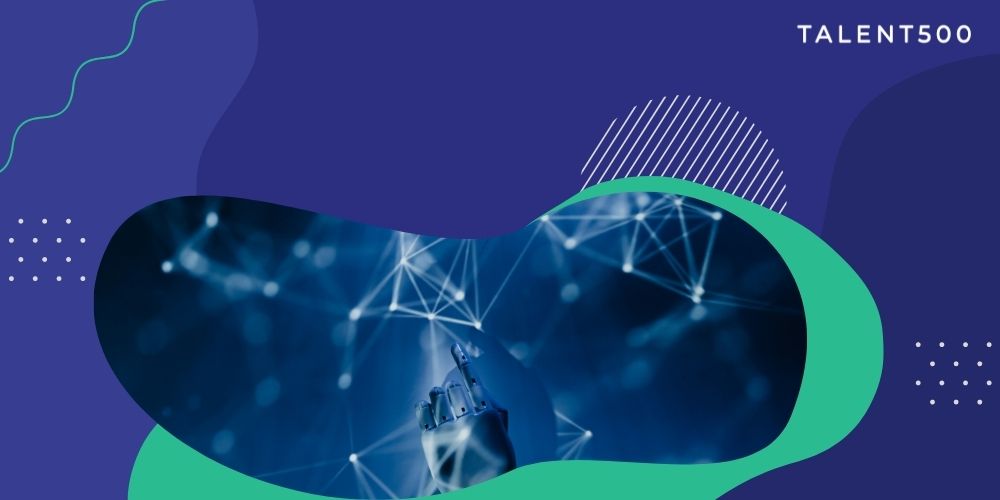Without a doubt, the pandemic has disrupted every industry and every organization without exception. There have been fundamental changes in what employees want from their workplace, and the organization in general. According to a Talent500 Talent Intelligence survey, 85% of professionals are looking for new opportunities in 2022 which poses huge implications on how businesses will need to respond going forward. Furthermore, when it comes to interviews, less is more. Candidates worldwide find 2-3 rounds of interviews ideal and 10-20 days as a reasonable duration for landing a job.
So, what does an organization’s recruitment process look like now?
Companies must sell themselves in the interview process
Now, this is where it gets interesting. Not too long ago, recruiters used the interview process to give candidates the opportunity to make an appealing case as to why they should be hired. But that’s changed. Candidates now are looking for more than just a fat paycheck from the organization. According to the Talent500 survey, competitive compensation isn’t the only key decision – making factor when selecting a job. Employee Value Proposition attributes like growth opportunities in the company, work-life balance, and company culture are paramount in the global work setting.
Trust is becoming increasingly important to candidates during the recruitment process. Employers can use the recruiting process to earn a candidate’s trust by being authentic, vulnerable, and empathetic. They need to come across as being human. With candidates displaying more curiosity than before, taking the time to answer a candidate’s questions and concerns and spending longer to really get to know the candidate can help build trust. This becomes especially important if the candidate is going to work remotely. The reason all of this becomes relevant is because when a candidate joins fully convinced about the organization, its values and culture, it becomes a successful hire. This also leads to a lower employee turnover, which can be costly. But job interviews last between 45 minutes and an hour – so it’s got to be well planned.
Virtual interviews are now the norm
Although studies show that 86% of companies are conducting job interviews via videoconference, a majority of businesses still use telephone interviews, at least for some part of the recruitment process – especially during the initial filtration phase. But for the rounds that come after, most organizations have adopted video interviews in lieu of in-person meetings. Because these are quite different, it becomes important to provide context to interviewers and candidates about the need for a virtual interview as well as what is expected of the interview.
There are some companies who also choose to go with pre-recorded interviews. Here they employ services to record the interview questions that the candidate then proceeds to record their responses to and send them back. These generally work in the earlier rounds of the recruitment process as a way to determine which candidates get chosen.
Organizations are also finding increasing value in identifying and narrowing down on platforms for virtual interviews that work best for them. Some video-conferencing platforms make it possible for multiple people in remote locations to participate simultaneously. It is not uncommon for businesses to use a specific platform for all meetings. Still, best practices would require that companies have a few other platforms in the event of service outages.
Hiring managers need to redefine a ‘qualified/experienced candidate’
Post covid, many recruiters are having to recruit and hire for hard-to-fill and volume positions, and to do it relatively quickly. According to Hueman Recruitment Manager John Morrison, “A lot more candidates are beginning to job search as COVID-19 protocols decrease, and with the introduction of the vaccine, more people are starting to feel comfortable to go back to work.”
Finding skilled tech talent has been extremely hard mostly due to the uncertainty of the economy. This means that recruiters need to leverage a plethora of sourcing tactics to attract quality candidates. However, the shifting nature of the candidate pool has led to hiring managers and recruiters feeling the pressure to redefine what a “qualified/experienced candidate” is. The truth is that as much as hiring managers would prefer to hire the perfect candidate – ideal amount of experience, years in a similar field, and the right cultural fit – the post pandemic era makes sure that this isn’t always possible. The talent market is very volatile. So instead of continuing to search for the ‘perfect candidate’ for extended periods of time, the hiring manager should reevaluate if the candidate has other skills that make them employable.
So maybe instead of looking to check all of the boxes in terms of what looks good on paper, managers can look for candidates with strong communication skills, technological prowess, and a driven, flexible approach to their work. What happens when this approach is taken is that hiring managers fuel the organization with a larger, more diverse candidate pool.
The role of social media in job applications and promotion
Organizations using social social media channels to recruit top talent was one of the top recruitment trends of 2019. In fact, 92% of companies use social media for recruitment, according to a report by Adweek.
According to a survey by CareerBuilder, 73% of candidates are passive job seekers. This means that it is now upto companies to scour for top talent and convince them to join the organization, rather than the other way around. When organizations add social media to their hiring strategy, it enables them to attract active and passive candidates, target specific and ideal talent pool, boost employer brand and company culture, and save on recruiting costs.
It’s not that social media, or companies being active on social media didn’t exist just a few years ago. The pandemic caused a major shift in how and where recruiters needed to look for talent and how organizations would use social media job applications and promotions. This generation is dependent on marketing and social media channels. With an estimated 81% of Americans existing almost entirely online and 90% of job seekers looking for jobs on their mobile devices, sharing information pertaining to job openings on social media platforms guarantees that a wider audience will see it. Today, job openings can be shared, companies can be followed, and applications can be easily accessed, all from the ease of a Facebook or LinkedIn page.
If you are looking for quick and seamless hiring and managing of global workforce, Talent500 can help. Schedule a consultation today.


